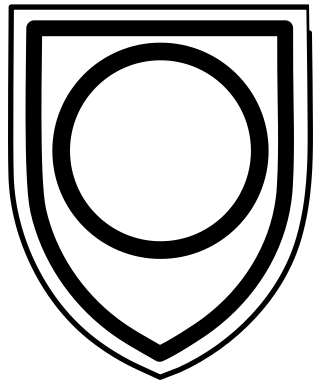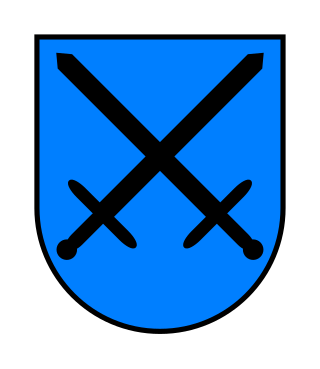
The 334th Infantry Division was a German Army infantry division in World War II. Originally formed in November 1942, it surrendered to the Allies at the conclusion of the Tunisian Campaign in May 1943. The division was reconstituted on 3 June 1943 in France within the 1st Army, with the staff of the 80th Infantry Division as well as remnants of the old division and replacement units. It spent the remainder of the war serving on the Italian Front.

The 161 Infantry Division was a major unit of the German Wehrmacht. It fought in the Battle of France, and then later on in the Eastern Front.

The 82nd Infantry Division was a German Army infantry division in World War II. The 82nd was part of the sixth Aufstellungswelle of German infantry divisions.
II Army Corps was a corps in the German Army during World War II.

The 81st Infantry Division was an infantry division of the German Army during World War II. It was active from 1939 until 1945 and served primarily on the Eastern Front.

The 205th Infantry Division was a German infantry division of the Heer during the Second World War. It was initially known as the 14th Landwehr Division.
The 377th Field Artillery Regiment is a field artillery regiment of the United States Army. A parent regiment under the U.S. Army Regimental System, the regiment's 2nd Battalion, 377th Field Artillery Regiment is assigned to the 2nd Infantry Brigade Combat Team (Airborne), 11th Airborne Division. Elements of the regiment have also served with the 101st Airborne Division and 82nd Airborne Division, and have seen service in World War II, Vietnam, and in both Iraq and Afghanistan during the Global War on Terror. The 1st and 3rd Battalions as well as Batteries D and E are Inactive.

The 223rd Infantry Division was an infantry division of the German Heer during World War II.
The 225th Infantry Division was an infantry division of the German Heer during World War II.
The 159th Infantry Division was an infantry division of the German Heer during World War II. The unit, at times designated Commander of Reserve Troops IX, 159th Division, Division No. 159, and 159th Reserve Division, was active between 1939 and 1945.
The 168th Infantry Division was an infantry division of the German Heer during World War II. It was active between 1939 and 1945.
The 199th Infantry Division was an infantry division of the German Heer during World War II.
The 251st Infantry Division was an infantry division of the German Heer during World War II.
The 273rd Infantry Division was a planned infantry division of the German Wehrmacht during World War II. Its deployment was attempted twice, once in 1940 and once in 1945. The former deployment was interrupted after the German victory in the Battle of France, and the latter deployment never came to full strength due to the imminent end of the war.
The 321st Infantry Division was an infantry division of the German Heer during World War II. Between November 1943 and June 1944, it was known as Division Group 321.
The 323rd Infantry Division was an infantry division of the German Heer during World War II. It was formed in 1940, sent to the Eastern Front in 1942, and dissolved after heavy casualties in 1943. The remnants of the division were briefly grouped into the Division Group 323, which was eventually folded into the 88th Infantry Division in May 1944.
The 327th Infantry Division was an infantry division of the German Heer during World War II.
The 328th Infantry Division was the name of two distinct infantry divisions of the German army during World War II. The first, simply dubbed 328th Infantry Division, existed between 1941 and 1943, while the second, designated 328th Infantry Division "Zealand", existed for just under two months in 1945.
The 330th Infantry Division was an infantry division of the German army during World War II. It was active between 1941 and 1943.
The 331st Infantry Division was an infantry division of the German army during World War II. It was active between 1941 and 1944, with a brief period of inactivity between 30 December 1943 and 16 March 1944.





